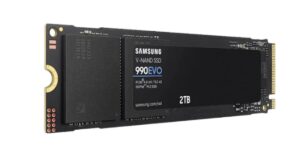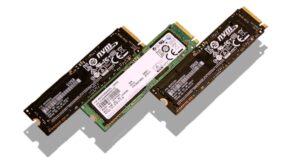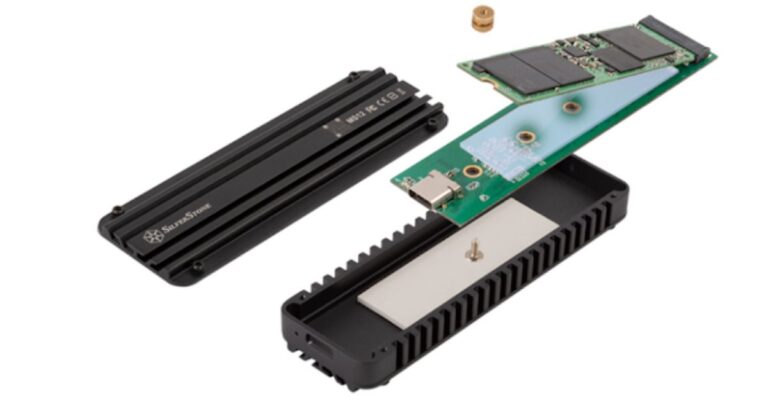Top Mistakes to Avoid When Installing Solid State Drives
Installing a solid-state drive (SSD) can be one of the smartest upgrades you make to your computer. It dramatically improves boot times, speeds up file access, and enhances overall system responsiveness. But—and it’s a big but—installing an SSD isn’t always as straightforward as it seems. Many users, especially first-timers, fall into common traps that can lead to underperformance, frustration, or even permanent damage to the drive or system.
In this comprehensive guide, we’ll highlight the most frequent mistakes people make when installing solid-state drives, especially newer options like nvme solid state drives. Whether you’re upgrading an old laptop or building a new PC, understanding what not to do can be just as important as knowing what to do.
1. Not Checking Compatibility
This may sound like a basic step, but overlooking compatibility is one of the most common pitfalls. Just because you’ve purchased a modern SSD doesn’t mean your motherboard can support it.
NVMe and M.2 drives are incredibly fast and efficient, but only if your system is designed to use them. Some older systems have M.2 slots that only support SATA, not NVMe. Others might not support certain drive lengths (such as 2280 or 22110), or they might lack BIOS-level NVMe support.
Before you make a purchase, carefully read your motherboard’s manual. Look into what types of connections it supports—SATA, PCIe, M.2, NVMe—and what sizes of drives it accommodates. Buying an incompatible SSD can cost you more than just money—it can waste your time and cause serious headaches.
2. Overlooking BIOS Settings
You’ve physically installed the drive, but it’s not showing up on your system. Sound familiar? Often, the issue lies within your BIOS.
Your BIOS may be configured for older storage protocols. To get your new SSD up and running, you may need to manually change a few settings:
- Set Storage Mode to AHCI or NVMe (depending on the drive)
- Enable UEFI Boot Mode instead of Legacy
- Adjust Boot Priority so your SSD is listed first
Access your BIOS by pressing a specific key (often Delete or F2) during startup. Look under storage or boot settings and double-check the configurations. A few clicks here can prevent hours of confusion later.
3. Forgetting Firmware Updates
Firmware updates aren’t just for operating systems or graphics cards—your SSD has firmware too, and it plays a crucial role in performance and reliability.
Drive manufacturers often release firmware updates to improve compatibility, increase performance, or fix known issues. Installing these updates is typically as easy as downloading a utility from the manufacturer’s website and running it while your drive is connected.
Doing this early on ensures that you’re starting with the most stable and optimized version of the drive software, which is especially important if you’re using the SSD as your primary boot drive.
4. Skipping a Backup Before Installation
Installing a new SSD often means transferring data from your old drive, and this is where many people make a costly mistake—forgetting to back up their files.
Cloning a drive or reinstalling your operating system can be risky. A sudden power outage, system crash, or simple user error could wipe your files. Always create a full backup using an external hard drive or a trusted cloud service.
Having a backup gives you peace of mind. It also means that if something goes wrong during the installation, you’re not starting from square one.
5. Mishandling the Drive During Installation
SSDs are more rugged than traditional hard drives since they have no moving parts, but they’re still electronic components and must be handled with care.
- Ground yourself before touching the drive to prevent static discharge.
- Insert the M.2 drive at an angle and secure it gently with the proper screw.
- Never force the connection. If it doesn’t fit smoothly, something’s wrong.
Also, avoid touching the gold connector pins. Even a small amount of oil or moisture from your fingers can impact performance or cause damage.
6. Ignoring Thermal Management
It’s easy to forget that SSDs—especially high-speed NVMe models—can get hot. Too hot. And heat can reduce both performance and lifespan.
Watch for signs like slower speeds during heavy use, unexpected drive disconnections, or even system crashes. These can all point to thermal throttling.
Solutions include:
- Using a heatsink (some drives and motherboards include one)
- Improving case airflow by repositioning fans or cables
- Avoiding tight or poorly ventilated spaces, especially in compact cases or laptops
Keep your drive cool, and it will reward you with consistent, reliable performance.

7. Not Initializing or Formatting the SSD
After you install the SSD physically, it may still not show up in Windows Explorer. Don’t panic—it likely just needs to be initialized.
Open Disk Management in Windows (you can search for it in the Start menu), locate your new drive, and:
- Right-click the unallocated space
- Select Initialize Disk
- Create a New Simple Volume and format it (NTFS is usually recommended)
Only after this process will the drive appear ready to use within your system.
8. Cloning Without Cleaning Up First
If you’re cloning your old drive to your new SSD, do some digital housekeeping first. Carrying over clutter like outdated drivers, unused programs, and temporary files defeats the purpose of a fresh, fast drive.
- Run disk cleanup tools
- Uninstall unnecessary software
- Delete files you no longer need
Starting with a clean system ensures your SSD runs at optimal speed right from the get-go.
9. Using Outdated or Incompatible Cloning Tools
Cloning your old drive to a new SSD? Choose the right software. Outdated or buggy cloning programs can misalign partitions, skip essential files, or fail altogether.
Popular and reliable tools include:
- Macrium Reflect
- Clonezilla
- Software provided by your SSD brand (Samsung Data Migration, Acronis, etc.)
Always read reviews and check the last update date of any cloning software before trusting it with your data.
10. Overloading the Drive
SSDs perform best when they have room to breathe. Filling your SSD to 100% capacity slows down write operations and hampers performance.
Aim to keep at least 10–20% of the drive empty. This allows the controller to manage space efficiently and helps prevent write amplification, which can shorten the life of your drive.
Regularly delete old files, transfer rarely used data to other drives, or use cloud storage to free up space.
11. Not Updating Your OS and Drivers
An SSD upgrade is the perfect time to update your system. New operating system builds and drivers are designed to work better with modern storage.
Ensure the following are updated:
- Operating System (especially Windows 10/11 or macOS updates)
- Chipset Drivers for your motherboard
- Storage Controller Drivers
- Any SSD-specific tools or drivers offered by the manufacturer
These updates can unlock features like TRIM, improved read/write speeds, and better power management.
12. Assuming All SSDs Are Equal
Not all SSDs are created alike. There’s a huge performance and compatibility difference between SATA SSDs, nvme solid state drives, and m.2 solid state drives.
Here’s a quick breakdown:
- SATA SSDs are affordable and compatible with most older systems
- M.2 SATA SSDs offer compact size but the same speed as regular SATA
- NVMe SSDs use PCIe lanes to deliver much faster speeds but need proper support
Understand your needs and your system’s capabilities before choosing a drive.

Conclusion:
Installing a solid-state drive can breathe new life into your computer but only if you do it right. By steering clear of these common mistakes, you ensure a smooth upgrade process and long-term satisfaction with your new hardware.
For reliable components and trusted advice, turn to brands like Cloud Ninjas. Whether you’re exploring cutting-edge storage technology or compact, high-efficiency options, their quality products and helpful support can guide you every step of the way.
Take your time, follow best practices, and soon you’ll be enjoying the kind of speed and performance that makes everything from boot-ups to backups feel like a breeze.

